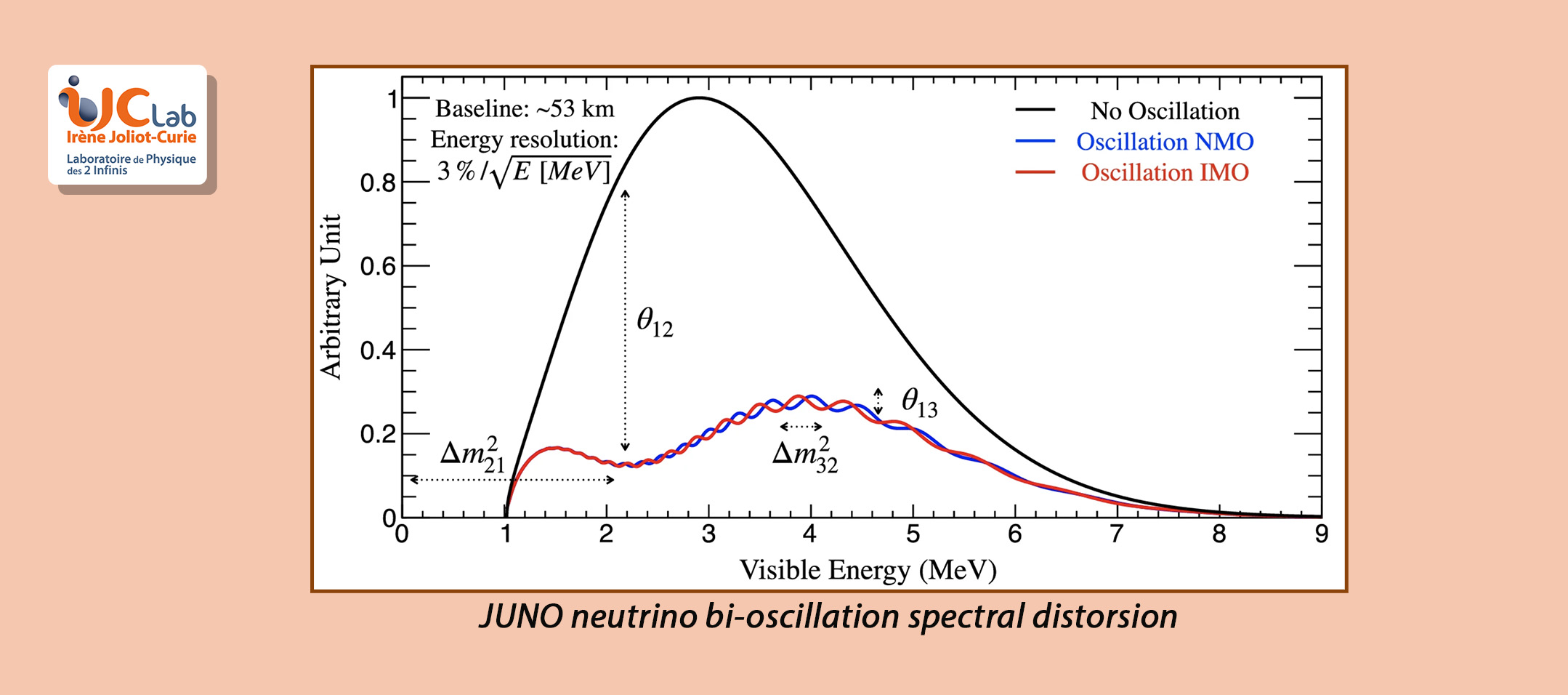
The "neutrino oscillation" experiments make it possible to measure the mass differences between the three known types of neutrinos: by propagating over long distances, a neutrino of one type can be transformed into a neutrino of another type by a phenomenon of quantum nature called oscillation, the probability of which is linked to the difference in mass between the two types of neutrinos. But this phenomenon does not make it possible to directly determine the hierarchy between these masses, that is to say: who is the heaviest or the lightest?
The determination of the "mass hierarchy" of neutrinos is precisely the subject of the article "Synergies and Prospects for Early Resolution of the Neutrino Mass Ordering", published on March 30, 2022 in Nature Scientific Reports by the Neutrinos team of IJCLab (PHE pole), as well as by members of the APC, the LNCA and SUBATECH, under the responsibility of Anatael Cabrera (IJCLab, PHE pole) with Yang Han (PhD student at the IJCLab) and Hiroshi Nunokawa (guest professor at IJCLab, PUC University, Rio de Janeiro, Brazil). This article explores all the neutrino oscillation experiments in the world to determine which are the most relevant to combine to give the shortest possible timescale for discovery. It focuses on the highest precision current and future experiments in the world, using both accelerator and reactor neutrinos until early 2030.
The authors found that the combination of the NOvA experiment (US-based experiment, ongoing), T2K (Japan-based, ongoing) with the JUNO experiment (China-based, under construction) should be enough to achieve the long-awaited first observation of discovery potential ≥5σ, thereby providing fundamental insight into the Universe with many ramifications in the unpredictable ultimate neutrino nature in the Standard Model of particle physics.
This is a surprising result as no experiment is expected to reach a standalone significance of 5σ until DUNE (US-based, under construction) begins taking data, likely in early 2030. The information additional atmospheric neutrinos should augment the information highlighted in this study.























